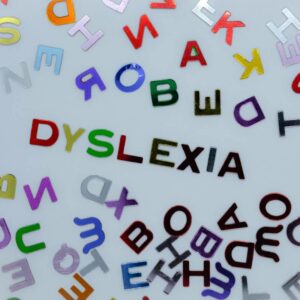EVERYTHING YOU COULD EVER WANT TO KNOW ABOUT DYSLEXIA!
POLITICAL METAPHOR
The current political climate bears a striking resemblance to what I see as polarized “mindsets/belief systems” in education. Think of it as the liberals pushing for change and the conservatives pushing for sameness.
While a paradigm shift is clearly evident, especially in the past 10 years, driven by improvements in neuroimaging techniques, steadfast old school believers rear their heads from time to time. This is particularly concerning when these stoic individuals, who hang on to an outdated belief system regarding how to teach kids are actually educators, school administrators, and/or public school/private school board members.
The conservative movement is big on doing things the old way, not rocking the boat, preserving their style of teaching, resisting change, and asserting that some force other than their teaching style or educational philosophy is creating non-performers. The view is that lazy, unmotivated, apathetic, unfocused, slow kids who do not work hard enough, is the only force that contributes to a student not performing.
The liberals embrace neuroscience and learning theory, encourage change, and understand that more personalized educational models work. These educational visionaries, incorporate technology and varied methodologies into their teaching styles, and empower all children with average cognitive efficiency to succeed. These change agents do not let “text” be the obstacle to learning for those with high intelligence and a poor ability to read. These professionals believe that if the student is struggling, the teacher must find a way to reach that child. In other words, the teacher failed. A great teacher once shared this belief with me: “If the student did not learn, the teacher did not teach.”
Again, the educational arena has its conservatives and its liberals. Liberals tend to embrace change, conservatives resist change. It seems that liberal agendas eventually prevail, and conservatives simply slow the inevitable. The world is not flat, the sun does not rotate around the earth, man did walk on the moon, evolution is real, global warming is something to be concerned about, isolationism is not practical in a global economy, and so on, and so on.
Science has figured out why smart children struggle: reading does not come easily for everyone. Fifteen to twenty percent of students exposed to traditional reading curriculum do not become good readers. Yet there are those among us who do not embrace science. These resistors of change assume that the children failing are just not smart, not motivated, not trying, not supported at home, etc. That is about as far from the truth as is possible. No child goes to school in the morning with a plan to not try, and fail. At least not until years of trying with no measurable success takes the wind out of their sails.
The era is here of understanding neurodiversity and responding appropriately in one’s teaching methodologies to different brain styles (i.e., embracing the neuroscience of how to be a great teacher). Almost all aspects of classroom behavior and learning characteristics (what is seen on the surface) are driven by neuroanatomical and neurophysiological variables. “Free will” is not as free as many believe when it comes to learning and succeeding in school. Succeeding in school is not easy for some smart children, regardless of their desire to do well. One sizes does not fit all as it relates to teaching methodologies. Casting any judgment on a child as it relates to what is expected of them based on what the “average brain can do” is simply archaic thinking. We all have a unique cognitive footprint. Understanding one’s cognitive footprint will explain most overt behaviors that may not be viewed as common reactions/behaviors (what average brains can do).
If one adopts the politics of change (let’s call this the liberal agenda), a second set of contaminants to truly helping and understanding the struggling student emerges. As in more general politics, there are pressures exerted within the liberal movement primarily driven by teachers and clinicians being uninformed or because they really believe they understand the true origins of learning challenges.
The personal agendas of those trained in, or fiscally linked to a particular product, do not always provide what is actually best for the struggling student. Practitioners tend to advocate for what they think is the best methodology. That is what they have been taught by developers who “sell” them on certain products. We could term them “lobbyists” for their personal agenda within the liberal community. They are often uninformed (ignorant) of other options and committed to their line of reasoning (their product), in that it maintains their paycheck/income flow. These folks become “salesmen” within the liberal party for what they believe is best for children, when in fact many other options may be more appropriate. Unfortunately, these care providers only see the needs of the child through their microscope, not through a telescope.
In a capitalist society, such as ours, we have difficulty using an unbiased agenda of what is truly best for a child due to the personal beliefs and interests of a few. This is the case with addressing neurodiversity reform and matching the most efficacious interventions, in the right sequence, with the particular characteristics of a child’s brain physiology.
Practitioners, by no fault of their own, become intellectually (they truly think they know what they are talking about based on a limited sample of knowledge) and fiscally attached to a particular modality of assisting with addressing neurodiversity. They tend to see things through their personal lenses (microscope view). These folks are not necessarily wrong, they are simply uninformed and scared to pass on work that they believe they can manage. If one’s only tool is a hammer- everything looks like a nail. If you sell hammers, you will be even more likely to see everything as a nail.
This is particularly true when intervening with the struggling reader. I am frequently asked by reading specialists, administrators in schools, related professionals, and parents which reading interventions are the best. The answer is all of the empirically-supported techniques are good; HOWEVER, some are better than others based on the child’s age, cognitive profile, current reading levels, attentional capacity, time availability, and fiscal resources of the parents.
Now, try telling this to someone trained in Lindamood Bell, Fast ForWord, Susan Barton, Wilson, Reading Recovery, Orton Gillingham, etc. Developing the right intervention to help a struggling reader should not be based on the opinion of a reading specialist trained in one single methodology. Many reading remediation techniques have shown clinical efficacy. Which one is right for a particular child should not be based on the opinion of someone who only knows one technique.
Furthermore, before pouring resources into a reading specialist, many times, lower-level cognitive skills need to be remediated first (such as somatosensory, sensorimotor, working memory, processing speed and phonological processing skills). Attempting to build reading skills on a shaky foundation of underlying cognitive systems will not yield great outcomes. Beyond just reading, the underlying cognitive hardware to comprehend words is as important, if not more important, than the reading of words.
Yet, those who sell widgets, will think everyone needs a widget. They do not know that one size does not fit all.This phenomenon is not only true with those who purport to teach children to read. Those who have a vested interest in treating ADHD or Autism unknowingly believe their methodologies are the cure for everything (e.g., occupational therapists, speech-language pathologists, behavioral therapists, pharmacologists, neurofeedback specialists, vision therapy, computer-based cognitive remediation programs, diets, supplements, hyperbaric oxygen chambers, meditation techniques, cognitive behavioral therapies, wilderness programs, boot camps, etc.). Everyone vested in one of these programs has a belief that what they have to offer, what widgets they sell, is the best thing on the market.
Addressing the brain styles of the neurodiverse requires the architect of the plan to not be attached to any single intervention, but to be aware of all methodologies, and write a prescription of what methodology, in what sequence, will be of greatest value in assisting the brain in question to function in an environment that requires somewhat different brain architecture. One may conclude that neuropsychologists and school neuropsychologists that have an in depth knowledge of the systems in the brain architecture underlying reading development are the “liberals” that should be leading the change and writing the prescription for cognitive and reading instruction. However, there will always be those that believe that neuro diagnostic testing (i.e., gathering the information necessary to create a path for success in an environment where one’s brain architectures do not match that required for traditional school) is a waste of time and money. These folks continue to believe that laziness and poor motivation are the problems, and that more practice, more tutors, and taking away privileges will result in better school performance. For the children of these folks, I feel pity and regret, as it is no fault of their own. Because this information was not available to my parents, I was one of these children.
DYSLEXIA – A PERSONAL TALE
Once upon a time, there was a little boy who so wanted to make his parents proud. However, no matter how hard he tried, he just could not seem to understand all the sounds, rules, and patterns intrinsic to reading as his classmates did. His parents and teachers asserted that he was lazy, not trying, or just not so smart. Others blamed his parents, suggesting that they did not provide the right support at home. Soon other children noticed and he became known as the “dumbest kid” in the class. He was always in the lowest reading groups, always ostracized when assigned to group/class projects, had difficulty maintaining attention, and off-task behaviors ensued. Soon, not only could this little boy not read, but he was seen as a behavior problem. To his astonishment, when he misbehaved, others thought he was funny and he gained attention. If he could not be cool for academic prowess, he found he could be cool for being the child that pushed the envelope on breaking the rules. He was occasionally crossing the line and getting in trouble, and soon he was spending a lot of time in the principal’s office. Eventually, his chronic failure in school, disruptive behavior, and teacher and parent criticism, created so much ego-insult that anxiety and depression, self-doubt, and poor self-esteem dominated this little boy’s emotional style. As he moved into middle and high school, more and more at-risk behaviors ensued, as did experimentation with drugs and alcohol. When using drugs and alcohol, the emotional distress, fear, and self-doubt while the perception of power increased. Soon the drugs, alcohol, and poor lifestyle choices further eroded familial relationships, and pushed away friends that could have been role models. The little boy found himself as an adult with his life in total disarray.
The boy survived, and against all odds, eventually got his life on track. The twists and turns that got him from where he was to where he is today are fuel for a very thrilling novel. Several special educators, a mother who never gave up, and the grace of God got him through some very difficult years. That little boy was me. I know firsthand how debilitating the absence of awareness is of how dyslexia can destroy the lives of otherwise smart children. I also know that as with folklore and reality shows, there are clear advantages to being dyslexic.
I have been most fortunate to have, through character strength and the support of several great mentors, developed into what many perceive as an expert on “dyslexia.” What continues to fascinate me is the lack of awareness and misperceptions in the general public, and in most educators, into just what dyslexia is. Dyslexia does not mean you see things backwards!
WHAT IS DYSLEXIA?
The human brain has specific regions dedicated to discreet tasks associated with reading. Below the level of words, is the “language of sounds” that must be differentiated and manipulated in order to form words. English words are driven by 1100 combinations of 44 sounds. These sounds are called phonemes.
http://www.gse.harvard.edu/news/uk/16/06/fixing-failure-model

Sounds (phonemes) do not simply show up in a region of one’s brain, but are converted in the inner ear to miniscule electrical charges that travel down nerve fibers (neurons), each carrying a unique pattern. These neurological patterns are eventually sorted – separated from each other into discrete sound units (individual phonemes) – and can be recombined into specific clusters (words). When enough neuroacoustic information becomes present to cross a threshold, subliminal binding takes place and the aware brain assumes what word is being processed. Eventually, the sounds become paired with visual symbols (letters). A different brain region is responsible for this aspect of reading.
Once a group of symbols (printed words) appropriately generates the corresponding sounds, the cluster of sounds elicits a word that, if not stored in semantic memory (vocabulary), will make no sense. Beyond just differentiating and organizing these sound units (phonemes) or corresponding letter combinations (graphemes), the ability to process these units in a timely manner is also a component of listening and reading. Typical human brains process 15 phonemes (sound bites) per second. Not all brains can manage the speed of sound equally well. The difficulties with managing words at the level of sounds and doing so in a timely manner is the cause of the vast majority of difficulties with reading. It is also linked to many children’s difficulties with attending. These symptom clusters (difficulty differentiating, segmenting, combining, and managing the speed of sound) are the core elements of what is termed “phonological dyslexia.”
There is another subtype of dyslexia termed “orthographic or surface dyslexia” that has little or nothing to do with phonological processing, but is related to the ability to remember what words “look like.” For example, if a child spells boat as “bote,” this is an error of visual judgement, not an error of understanding the sound structure of words/language. How then does one know if bote or boat is correct? In this pattern of reading challenges, it is not the sound structure, but the integrity of the visual memory system to quickly analyze parts, interpret a whole, and recognize errors. This type of dyslexia also slows down reading speed because when moving from word to word, the recognition process is slowed by poor visual processing variables. When the rare occasion happens and children have both subtypes of dyslexia (orthographic and phonological), it is termed “mixed dyslexia.”
READING REMEDIATION PROGRAMS
As noted in the earlier article, selecting the right intervention to help a struggling reader should not be based on the opinion of a reading specialist trained in one or two methodologies. All of these reading remediation techniques have shown clinical efficacy. Which one is right for a particular child should not be based on the opinion of someone who only knows one or two techniques, nor should it be based on the opinion of someone who has limited understanding of how weaknesses in lower-level cognitive abilities can contribute to delays in reading acquisition.
Alphabetic Phonics (Orton-Gillingham), SRA Corrective Reading, Earobics I or II , Lindamood Bell, LEXIA Primary Reading, (Bottom-Up) Horizons, Fast ForWord – Language V2, Fast ForWord – Language to Reading, Phono-Graphix, Saxon Phonics Program, Ladders to Literacy, Road to the Code, SIPPS, Scott Foresman Early Intervention Reading, Academy of Reading, Wilson Reading System, Laubach Way to Reading, Read 180, Read Naturally, Great Leaps Reading, The RAVE-O Curriculum, Fast Track Reading, Destination Reading, Reading Recovery, Fluency Formula, Susan Barton.
WHAT ABOUT COLLEGE?
Can a bright student with a reading challenge make it in college? You bet they can! But where does a smart student with a severe reading challenge go to college? High school advisors are rarely versed in the options available for higher-level education. Over the years, parents frequently ask what school can truly understand and help my child. If one desires a college/university that takes dyslexia seriously, here are a few schools to investigate:

American University (Washington, DC)
Curry College (Milton, MA)
Hofstra University (Hempstead, NY)
Landmark College (Putney, VT)
Lynchburg College (Lynchburg, VA)
Lynn University (Boca Raton, FL)
Marist College (Poughkeepsie, NY)
McDaniel College (Westminster, MD)
Mitchell College (New London, CT)
Muskingum University (New Concord, OH)
Northeastern University (Boston, MA)
The University of Arizona (Tucson, AZ)
University of Denver (Denver, CO)
University of Vermont (Burlington, VT)
West Virginia Wesleyan College (Buckhannon, WV)
Wingate University (Wingate, NC)
CHECK OUT CPS’ TOP RECOMMENDED BOOKS ABOUT DYSLEXIA
Overcoming Dyslexia: New and Complete Science Based Program for Reading Problems at Any Level by Shaywitz, Sally. (2003).
The Dyslexic Advantage: Unlocking the Hidden Potential of the Dyslexic Brain by Eide, B.L., & Eide, F.F. (2011).
The Dyslexia Empowerment Plan A Blueprint for Renewing Your Child’s Confidence and Love of Learning by Foss, Ben. (2013).
Creative, Successful, Dyslexic: 23 High Achievers Share Their Stories by Rooke, Margaret (2015).
ANNOUNCEMENTS
CPS, in conjunction with other pediatric specialists in Naples, are launching a satellite clinic at Island Montessori Academy at 579 E. Elkcam Circle, Marco Island, FL 34145. For more information contact 239.642.2020.
Beyond presentations at schools throughout the state, which are not open to the general public, do not miss Dr. Rizzo at:
Florida Counsel of Independent Schools 2016 Convention on Thursday, November 3 at the Hyatt Regency, Miami: CULTIVATING GROWTH: A MINDSET FOR THE FUTURE
Name of Session: Understanding Neurodiversity as It Relates to Personalized Educational Planning (10:05 – 12 PM IN ORCHID ROOM AB
Please Join Us!
The Frances McGlannan Foundation has scheduled a fundraising Cocktail Party for Saturday, March 4, 2017 at Biscayne Bay Yacht Club in Coconut Grove, FL from 6:00 P.M. to 9:30 P.M. The Frances McGlannan Foundation is a nonprofit organization founded in May, 2011 for the purpose of providing tuition assistance to elementary and middle school students with dyslexia and related language learning difficulties. The Foundation has been successful in raising funds from individual donors and special events. Several scholarships have been awarded to students at various educational institutions. Please save the date and plan to attend to assist in raising funds for the educational needs of children with reading and language challenges. For more information please visit our website at www.francesmcglannanfoundation.org.
New Staff Members!
Athena Campos has her M.S. with a specialization in exceptional education. Ms. Campos is a certified K-12th exceptional education teacher in the state of Florida, and a behavioral therapist. Athena completed her Bachelor of Science degree in Psychology at Nova Southeastern University; and then went to complete her Masters of Science in Education, with a specialization in Exceptional Education from Nova Southeastern University. In addition, Athena has worked with children and adolescents experiencing neuro-developmental deficits, autism, and related disabilities for the past 10 years. Ms. Campos has also taught in a variety of self-contained classrooms both public and private sectors for children with Developmental disabilities for the past 7 years. In addition, Ms. Campos has 10 years of experience as a behavioral therapist, providing in home therapy to children with autism. She specializing in autism spectrum disorders in both home and school settings. Athena focuses on the child’s social skills, communication, reading, fine-motor skills, language skills, daily life skills, and develops a behavioral intervention plan to reduce and increase certain behaviors. Athena’s passion and dedication is to enhance the lives of children with special needs. She is extremely dedicated to the children and families; and believes that each child is unique with individual needs and goals.
Sarika Joshi comes to us from Naples, FL with a solid background in Psychology and Applied Behavior Analysis (ABA). Through many years of experience, Sarika has gained a passion for interaction with children of all ages and conditions. Sarika received her Masters of Arts Degree in Applied Behavior Analysis with an Emphasis in Autism from Ball State University in 2014 and her Bachelors of Arts Degree from the University of Minnesota in 2011. As of February of 2015, Ms. Joshi became a Board Certified Behavior Analyst (BCBA) and has thus far worked in a clinical, academic, and residential setting. Ms. Joshi began working with children with autism and other developmental disabilities in 2011. She has previously worked as a Behavior Therapist and Analyst in the home setting along with providing one-on-one services and group services in a clinical setting, through direct instruction to students with various disabilities. Sarika is excited to begin her journey with Child Provider Specialists, as she is ready to bring forth her ABA knowledge.
Samantha Bellini, one of our wonderful interns, will be finishing her internship year in October of 2016. Samantha will also be a graduate of Nova Southeastern University as of October, with her Doctorate in Clinical Psychology. Samantha has accepted a postdoctoral position here at CPS. We are very excited to have her as an official employee!
SOCIAL SKILLS GROUPS
 Our bowling social skills group has returned! This year’s bowling group is focused on our middle school and early high school students,ages 11-16. Students will learn communication skills such as how to initiate and maintain conversations, switch topics while avoiding train wrecks, monitor body language, voice volume and tone, interpret expressions and hidden language, and much more. Sessions are held at SPAREZ, each Wednesday, from 5:00pm to 6:30pm.
Our bowling social skills group has returned! This year’s bowling group is focused on our middle school and early high school students,ages 11-16. Students will learn communication skills such as how to initiate and maintain conversations, switch topics while avoiding train wrecks, monitor body language, voice volume and tone, interpret expressions and hidden language, and much more. Sessions are held at SPAREZ, each Wednesday, from 5:00pm to 6:30pm.
School Aged Pragmatic Social Skills
 Our bowling social skills group is beginning! This year’s bowling group is focused on our elementary school children, ages 5 to 10. Children will explore the intricate relationship between how they feel and behave, and its influence on how they are seen and treated by others. Interventions are delivered during a structured 30-45 minute group activity, after which group members bowl in teams and social performance is assessed and addressed informally. At the end of group, participants enjoy food and refreshments. Sessions are held at SPAREZ, each Monday from 5:00 to 6:30 pm.
Our bowling social skills group is beginning! This year’s bowling group is focused on our elementary school children, ages 5 to 10. Children will explore the intricate relationship between how they feel and behave, and its influence on how they are seen and treated by others. Interventions are delivered during a structured 30-45 minute group activity, after which group members bowl in teams and social performance is assessed and addressed informally. At the end of group, participants enjoy food and refreshments. Sessions are held at SPAREZ, each Monday from 5:00 to 6:30 pm.
Child Provider Specialists
954.577.3396






